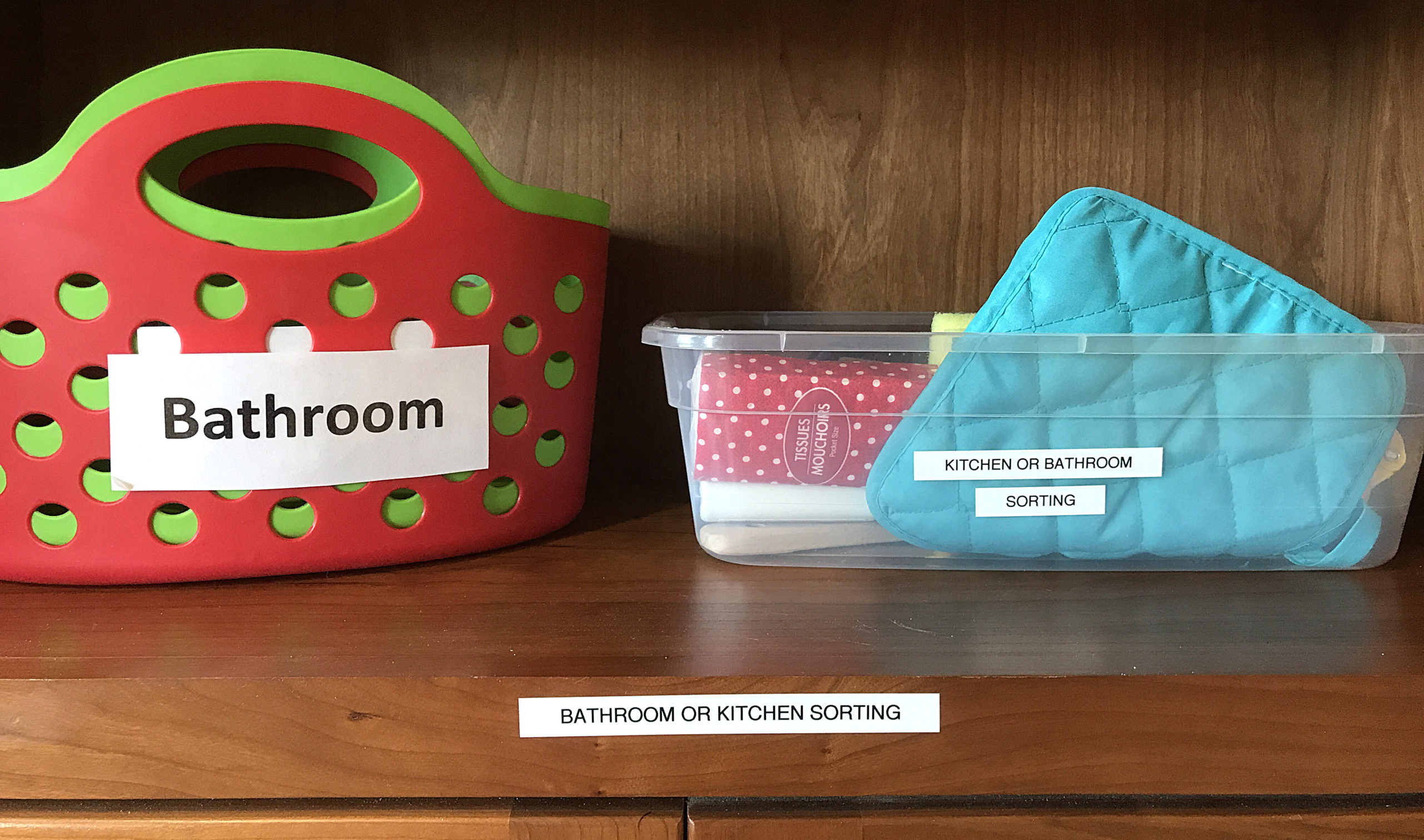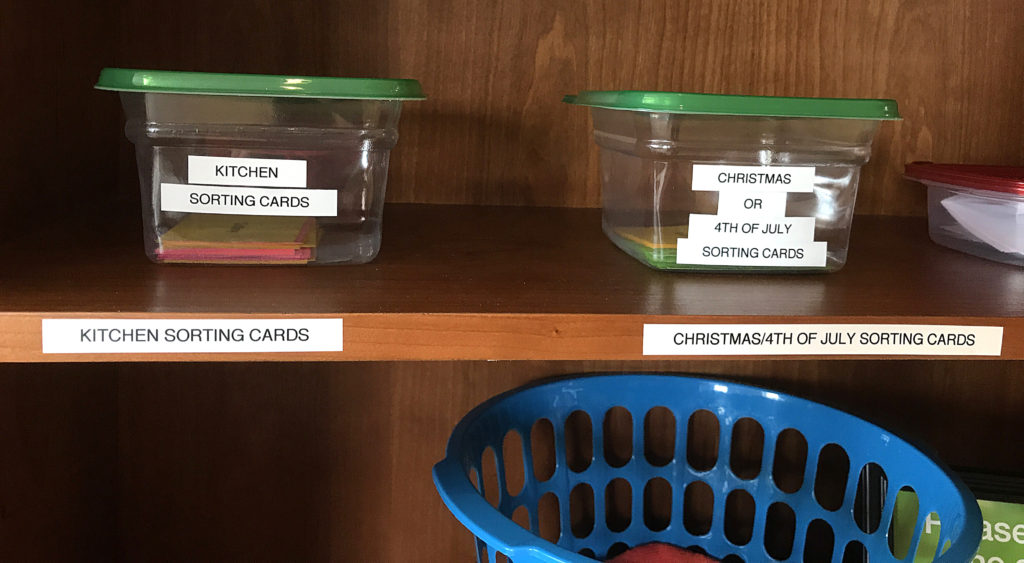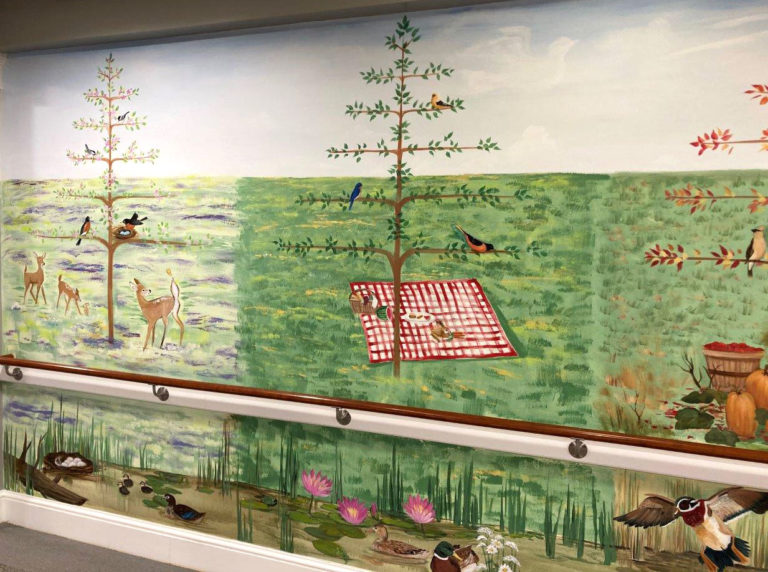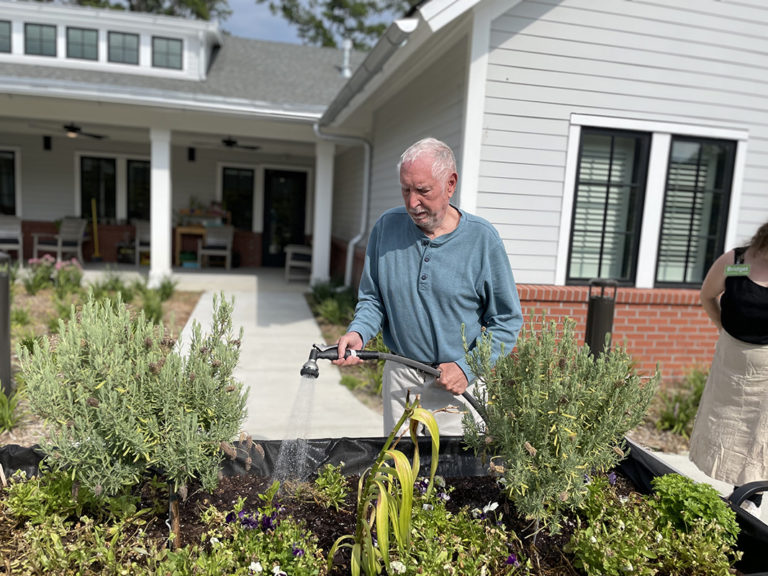April Update – Clark Retirement Community
By Renee Van Y
As with any new learning process, April has seen a lot of ups and some downs with the Montessori program. We knew that we needed more activities for the residents to do on their own (either initiated by them or by staff assisting them in getting started), because individual activities are only lasting about five minutes and not everyone always has something to do. After Jennifer’s visit in March, she helped us to identify other simple and inexpensive activities such as different sorting ideas and book groups.
Our living room is divided into two sections by a large bookcase and the residents are used to sitting on the side closest to the dining room where the TV is located. We are still working with care partners to begin a new routine of encouraging residents to go over to the other side of the room where the Montessori items are located. Something that has helped our residents to go over to that side and engage in the Montessori supplies, is having “down time” after lunch. For the first hour or two after lunch, we play soft music and keep the environment calm to help encourage residents to take needed naps in their rooms. Residents who don’t want to nap, can engage in a Montessori activity, or two or three. One issue I’ve noticed with this routine is that unless myself or Heather is out in the Kilbourne center helping the residents to engage in something, they are left sitting there bored since we are not turning the TV on. So, we have to move back and forth between residents constantly helping them to engage, put away and reengage. Therefore, a more complicated activity such as the metal insets has not happened on a regular basis because when we’re not able to sit for an extended period of time with one person when we’re trying to engage multiple residents with their own activity at the same time.
Heather and I are still working on figuring out the balance between having the residents focus on Montessori activities, group activities and not having the TV on. Jennifer made the suggestion that to help with transitions, to encourage the resident to put the supplies they were working with back on the shelves when they are done. We will continue to learn what works best for the residents and how the new flow of the day will evolve.
The other morning, we did have a very successful engagement in Montessori activities. I invited one of our residents help us with the flower arranging. She seemed to enjoy arranging the flowers as much as her peers did! I talked to her about owning the activity: getting the supplies off the shelf, gathering the residents, helping the residents to put the flowers on the tables and clean up. She said she would help me every Tuesday with the flowers.
Other activities such as the “Finish the Phrase” in which residents have the last word to famous sayings in front of them with the leader reading aloud the phrase as well as reading groups have gone over very well. I have created 2 more reading booklets, one about the Great Barrier Reef which acts as a travel group as well as travel reminisce group.
Involving Residents in Mealtime
One of the goals of our Montessori program at Clark Retirement is to give back roles related to meal time to the residents and to improve the prepared environment as it relates to meals. This includes offering “Help Yourself” snacks and beverages 24 hours a day and inviting residents to set the tables and clean up after meals. Knowing that improving contrast at the table setting can increase the amount eaten (Brush 2001), we have already added brightly colored place mats that contrast with the table and plates.
In addition, in May we will start a new routine that gets each meal off to a wonderful start. Residents will fold face cloths that will then be soaked in warm water and drained. Other residents will pass out the warm cloths so that everyone can wash their hands and face prior to beginning the meal.
How well does your dining room stack up?
There are several common problems that can make meals more of a challenge and less of a pleasurable event for your residents:
- Lighting
There is often insufficient lighting in dining rooms (as well as other areas of care communities). When I conduct an environmental evaluation, I bring a light meter and measure the light levels at each table to make sure they at least meet minimum guidelines. If you do not have access to a light meter, try wearing a pair of sunglasses smeared with a little petroleum jelly or lip balm. If after 15 minutes or so you find your eyes are tired, or you are subconsciously taking the glasses off, then the dining room probably does not have enough light. Older individuals require at least three times the amount of light as do younger individuals. So, a dining room that is well lit for residents may seem overly bright to younger caregivers. Corners and areas around the perimeter of the room are often not a well lit as the center of the room. Try adding lights and directing the light so it bounces off the walls. - Acoustics
Pay attention to both people generated and environmental sources of noise. Some are easier to address than others. Since dining rooms seldom are carpeted, it’s important to look to other surfaces to absorb noise. If there are many windows, which is a hard surface that bounces noise instead of absorbing it, use full drapes or curtains around them. The folds of the fabric will help absorb some noise. If the ceiling is high enough (usually 10 feet or more) fabric covered acoustic panels that hang down several feet will both absorb noise and keep it from reverberating around the room. If ceiling panels are not feasible, add acoustic panels to the wall. They can be given an old-fashioned, elegant paneled effect if they are frames in with a little wood trim. - Visual Environment
In addition to lighting, consider other aspects of the visual environment. Be sure to provide high contrast between the plate and the table or place setting. Research projects have shown that this, along with increasing light levels, can be effective in increasing independence and caloric intake (Brush, 2001; Koss and Gilmore, 1998). Also consider how the food is served. Some people will do better if they are given one course at a time. Too many choices may be overwhelming.
Thinking back on your life, how many memorable occasions involved a meal? Do you treasure a quiet meal at the end of a long day, either alone or with your family? Or are your meals full of fun and laughter, a chance to renew your balance? Think about your residents, and ask about their preferences. Find creative ways to help them continue to find meals more than just an opportunity to eat.









